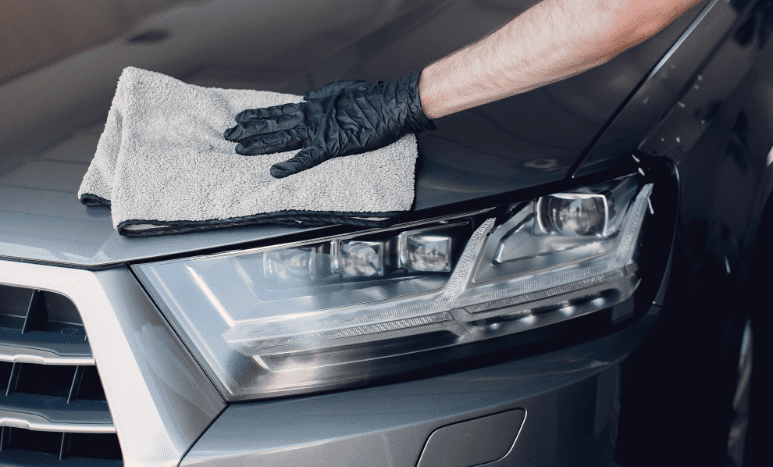Car wax, or automobile wax, is a natural or synthetic product designed to provide a thin layer of protection to the body parts of a vehicle and keep the paint job looking sharp, shiny, and flawless.
Waxing your car should be done regularly. How often depends on factors such as the weather as well as how often your car is out on the road. Generally, waxing every 8 to 12 weeks should be great. You can also tell that the wax is wearing thin with the lack of water beading. Wax makes water bead up, so no water beading means it’s time to apply wax again.
Waxing your car involves making good choices and remembering a few specific do’s and don’ts.
Here are 6 tips to ensure the best result:
1. Choose a high-quality car wax.
This doesn’t necessarily mean inflecting a huge dent on your budget. When buying a car wax with budget in mind, it’s safe to choose a product that’s in the middle of the price range.
You can choose between a carnauba-based car wax and a paint sealant. Carnauba wax is made from the leaves of a Brazilian palm tree and gives your car a nice, high-quality shine. Paint sealant, on the other hand, is a polymer-based wax that provides a longer lasting shine and extra protection.
2. Apply the wax to a clean surface.
Be sure to wash your car first before waxing. For the car wax to give you the best result, your car should be clean and completely dry.
3. Pay attention to the often-neglected areas.
When applying the wax, be sure to include the door jambs, door handles, and the area where the side of the car transitions to the underside.
4. Read the product instructions.
Instructions for the application of the wax will vary depending type and brand. Read all the instructions and package inserts to ensure proper application and the best result.
5. Apply the wax to the wax pad.
Put the wax into the wax pad rather than apply it directly onto the surface of your car, regardless of whether you’re using wax that comes in the tub format or a liquid paint sealant. With both wax in paste form and liquid paint sealant, make sure to start with only a small amount. The wax pad will eventually become saturated as you work on.
6. Apply the wax in small, circular motion.
Ensure a thorough application by applying the wax in a small, circular motion, using either vertical or horizontal rows of small circles. Since the wax will be removed afterward, it’s best to use only a thin layer of wax—thin enough to still be able to see the paint through the wax. Too much wax will be rather difficult to remove.
(The wax will dry pretty quickly, within two minutes, and will then appear matte and feel rather chalky to the touch.)
7. Use a soft cloth to remove the wax.
To remove the wax, choose a microfiber towel, chamois, or another soft cloth to avoid scratching the paint. Apply just a gentle pressure to the cloth and, as with wax application, use a circular motion to remove most of the wax. Once you have wiped off the visible wax, it’s time to buff the car, this time in a fast circular motion for maximum paint shine and luster.
Keep your car looking shiny and brand new by regularly waxing it using high-quality car wax to protect the paint job. A clean, brand-new looking car, when paired with well-maintained interior and major components, can save you a lot of money when it comes to maintenance and repair and fetch you a good price if you decide to sell it.
If your manufacturer’s warranty is running out soon, now’s a good time to be shopping for post-warranty coverage. EverCare offers vehicle service contract plans for various ranges of budget. Visit our website and explore your options.

